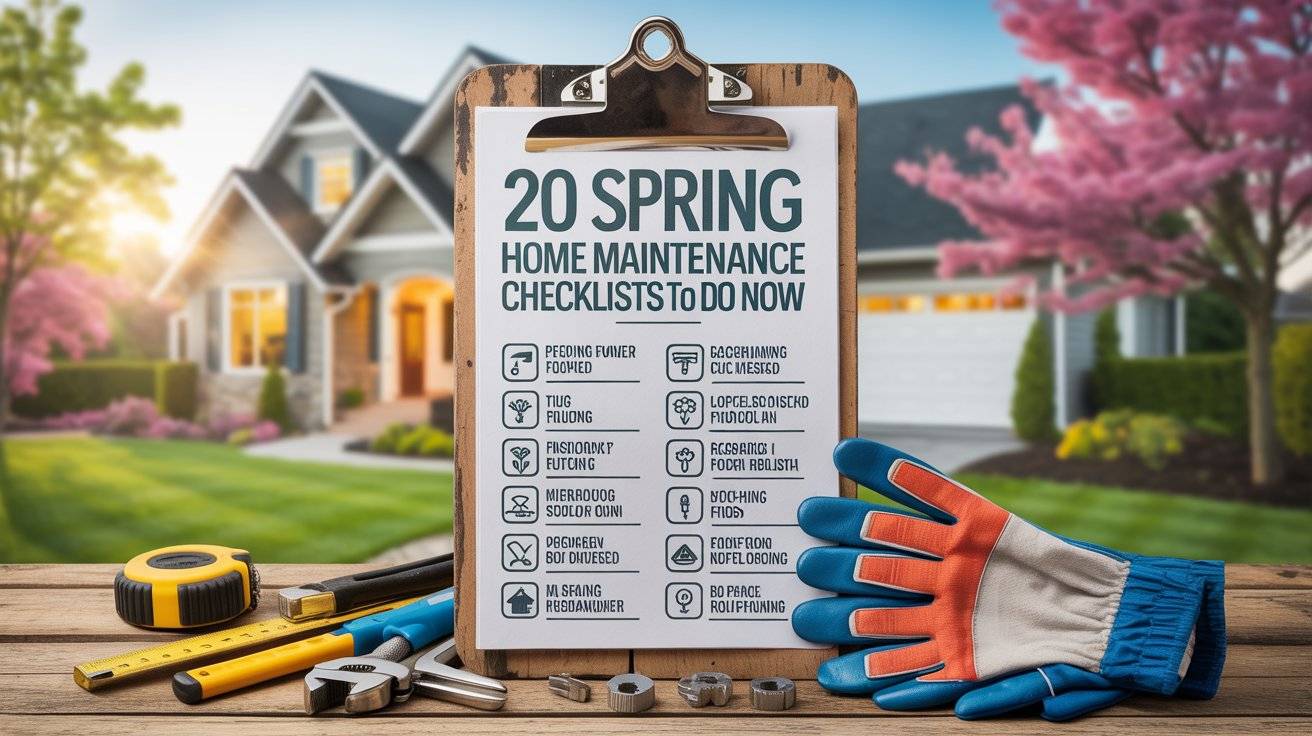Make Your Home Safer, Cleaner, and Ready for the Season
Spring Into Action: Why Seasonal Maintenance Matters
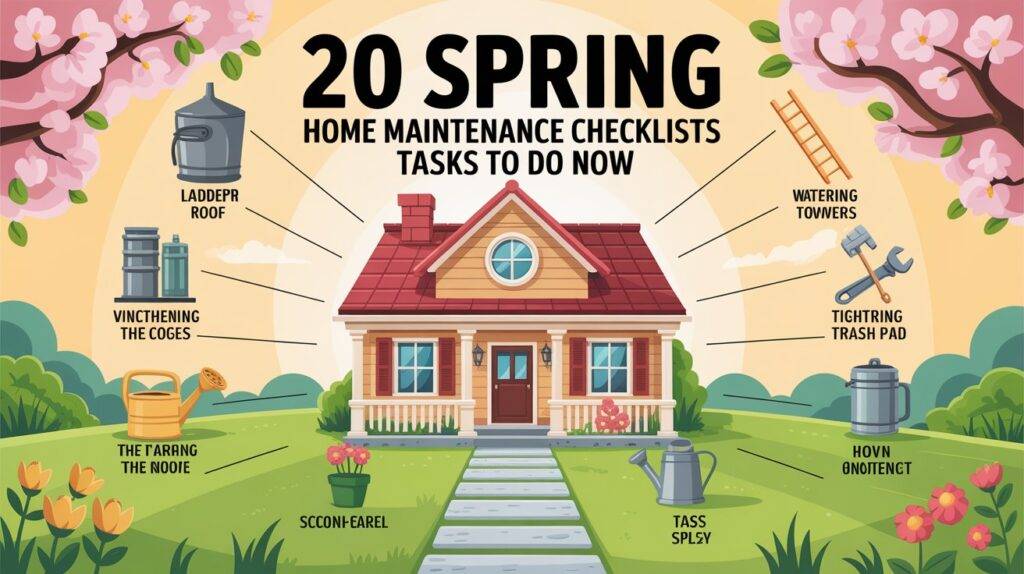
When the last frost melts and longer days return, it’s tempting to jump straight into barbecues and garden projects but before you roll out the patio furniture, your home needs a little attention.
Winter can be hard on a house, and spring is the ideal time to fix what cold weather may have damaged. This isn’t just about cleaning. It’s about protecting your home, extending the life of its systems, and preventing costly repairs.
This checklist isn’t just a list of things to do it’s a guide for what real people can actually accomplish on a weekend or across the month of April. These are hands-on, home-improving tasks that make a difference. You don’t need to be an expert, just willing to get a little dirty.
So grab a notepad, pull on some gloves, and let’s get started.
✅ 1. Inspect Your Roof for Winter Damage
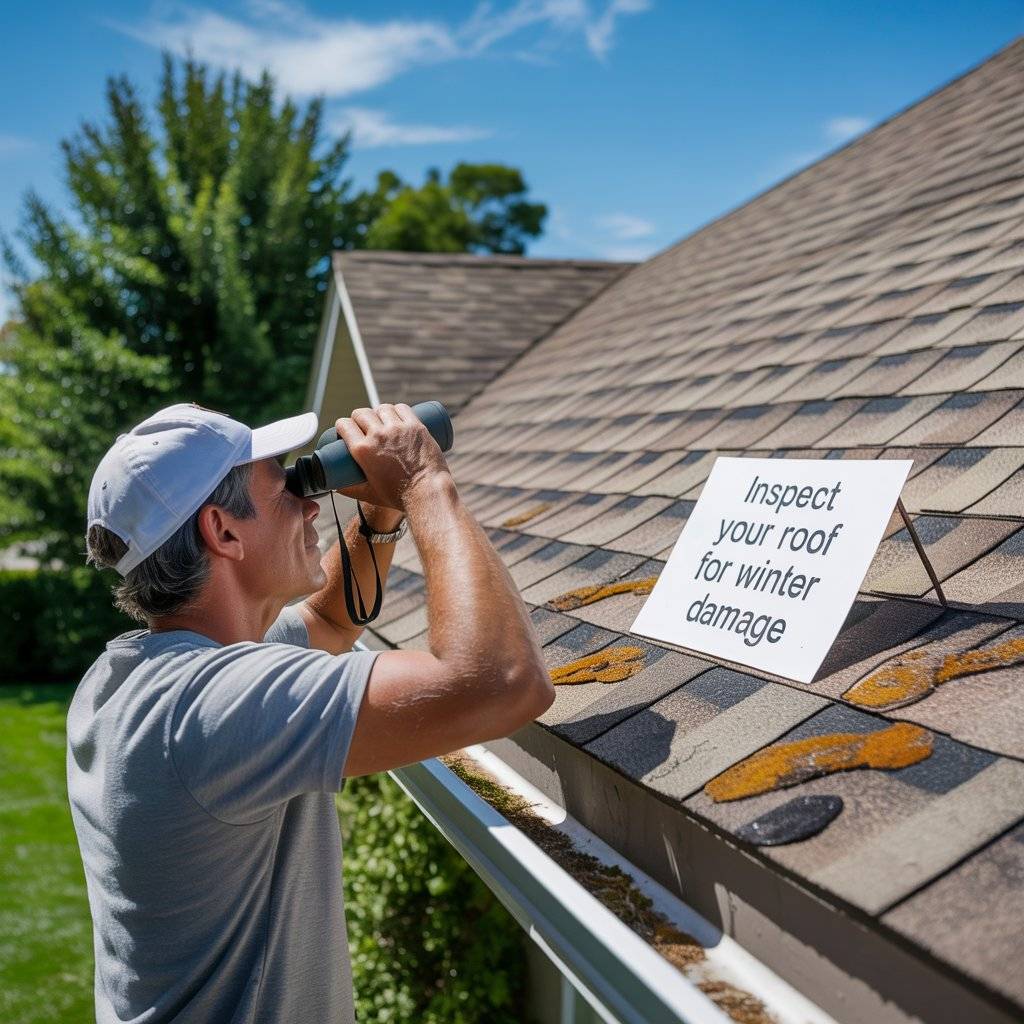
Your roof is your home’s first line of defense. After winter, it’s smart to give it a close look. Use binoculars from the ground or climb a ladder if it’s safe to do so (never walk directly on the roof unless you’re experienced).
Look for:
- Missing, curled, or cracked shingles
- Rust or cracks around flashing and vents
- Moss or algae buildup
- Signs of water pooling or dark spots
While you’re at it, check the chimney and surrounding masonry for any loose bricks or worn caulk. If anything looks off, don’t wait—call a roofing pro before spring rains hit. A minor leak now could lead to major interior damage later.
🛠️ Real tip: Snap photos with your phone for reference or to show a contractor. It’s easier than explaining what you saw.

✅ 2. Clean Out Gutters and Downspouts
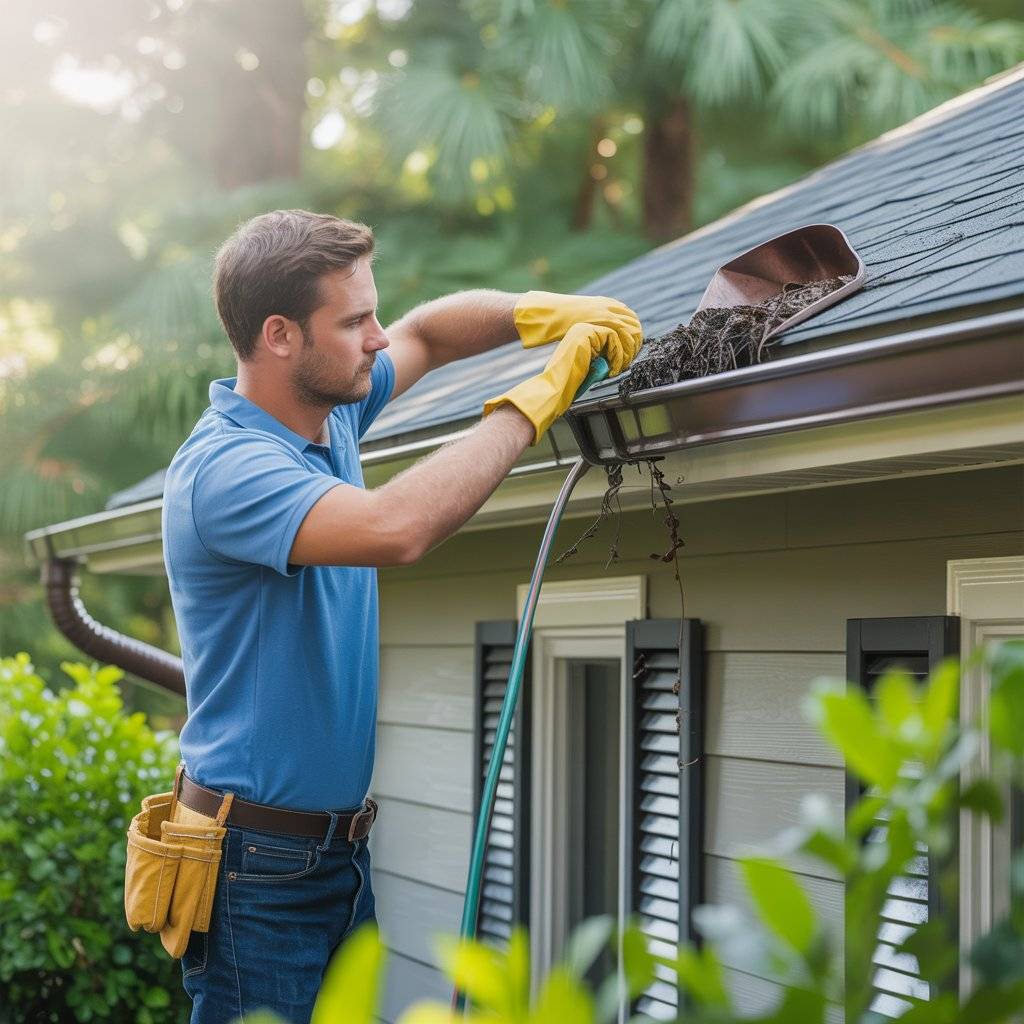
Clogged gutters cause water to overflow and damage your siding, foundation, or landscaping. In spring, gutters often collect leftover leaves, twigs, and debris from fall and winter storms.
Use gloves and a small scoop or trowel to remove gunk. Then flush the gutters with a garden hose to make sure water flows freely. Don’t forget the downspouts if water isn’t draining well, use a plumber’s snake or blast with a hose from the bottom.
Also, double-check that your gutters are still securely fastened to the fascia and pitched correctly (they should slope slightly toward the downspout).
🛠️ Real tip: Install a gutter guard system if you’re tired of cleaning them every season. There are DIY-friendly mesh options that fit most gutters.
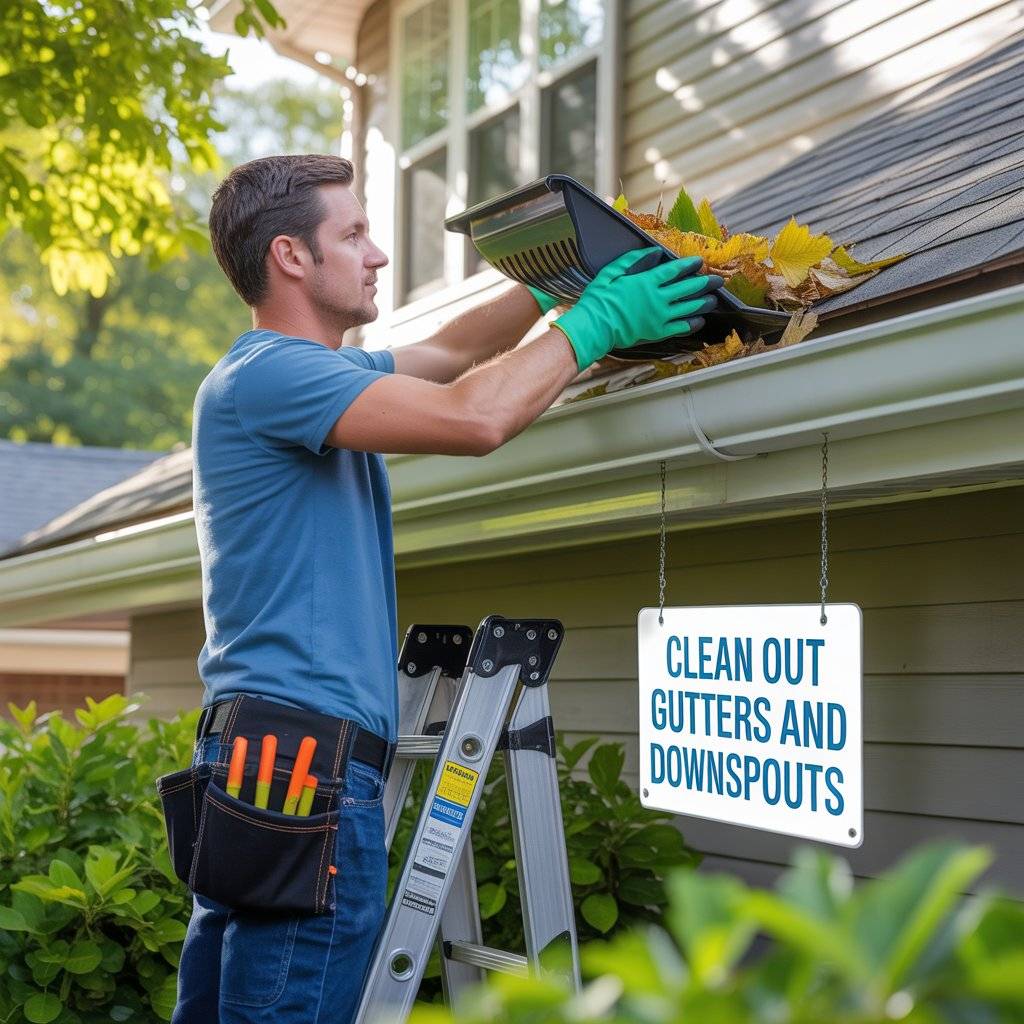
✅ 3. Check Exterior Faucets and Hoses
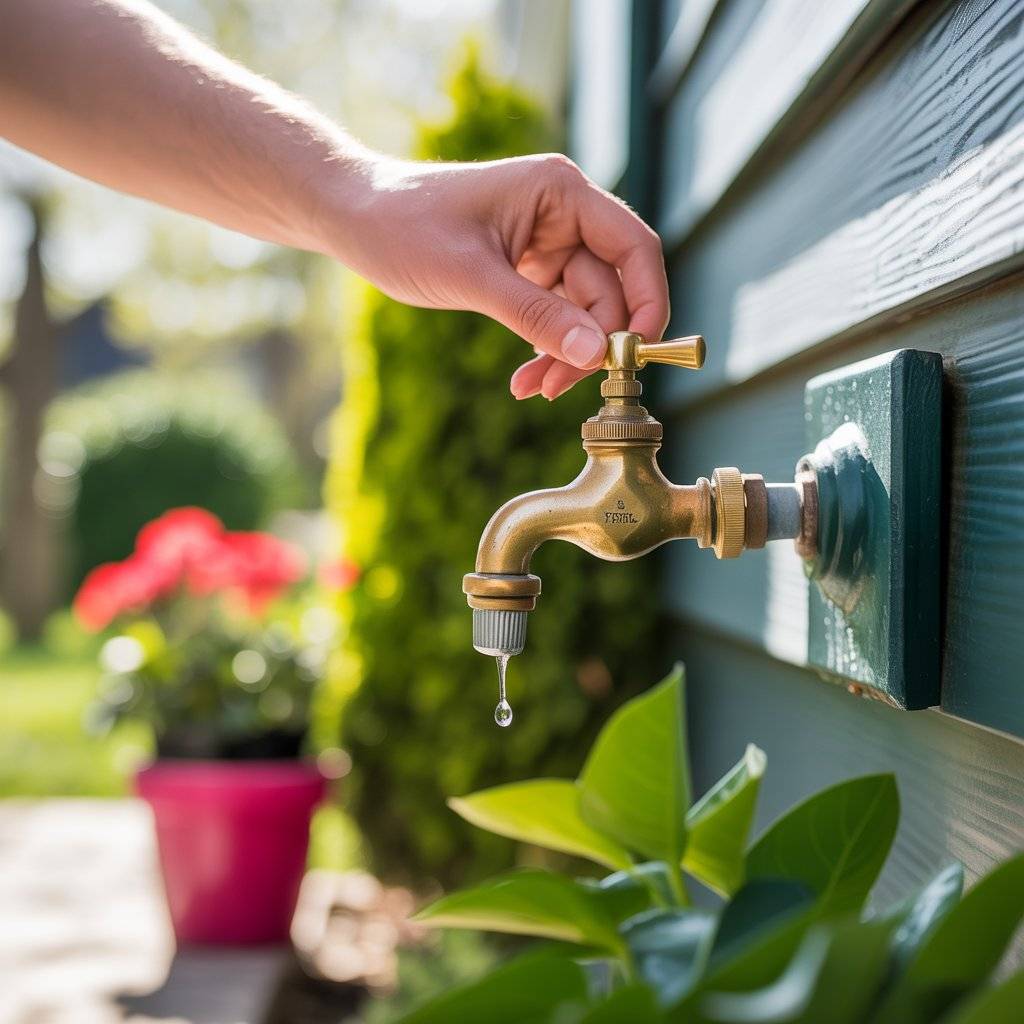
Frozen pipes aren’t always obvious until spring. Turn on your outdoor spigots and hoses to test for water pressure. If the flow is weak, or if water leaks into your home’s foundation, you might have a cracked pipe inside the wall.
Also:
- Look for any splits or cracks in hose lines.
- Replace old washers if your faucet is dripping.
- Connect a spray nozzle and make sure it seals tightly.
If everything checks out, go ahead and pull your hose reel out of storage. You’ll need it soon for garden watering or rinsing the driveway.
🛠️ Real tip: Always disconnect hoses before winter to avoid this problem next year. Use a hose timer in summer to avoid overwatering.
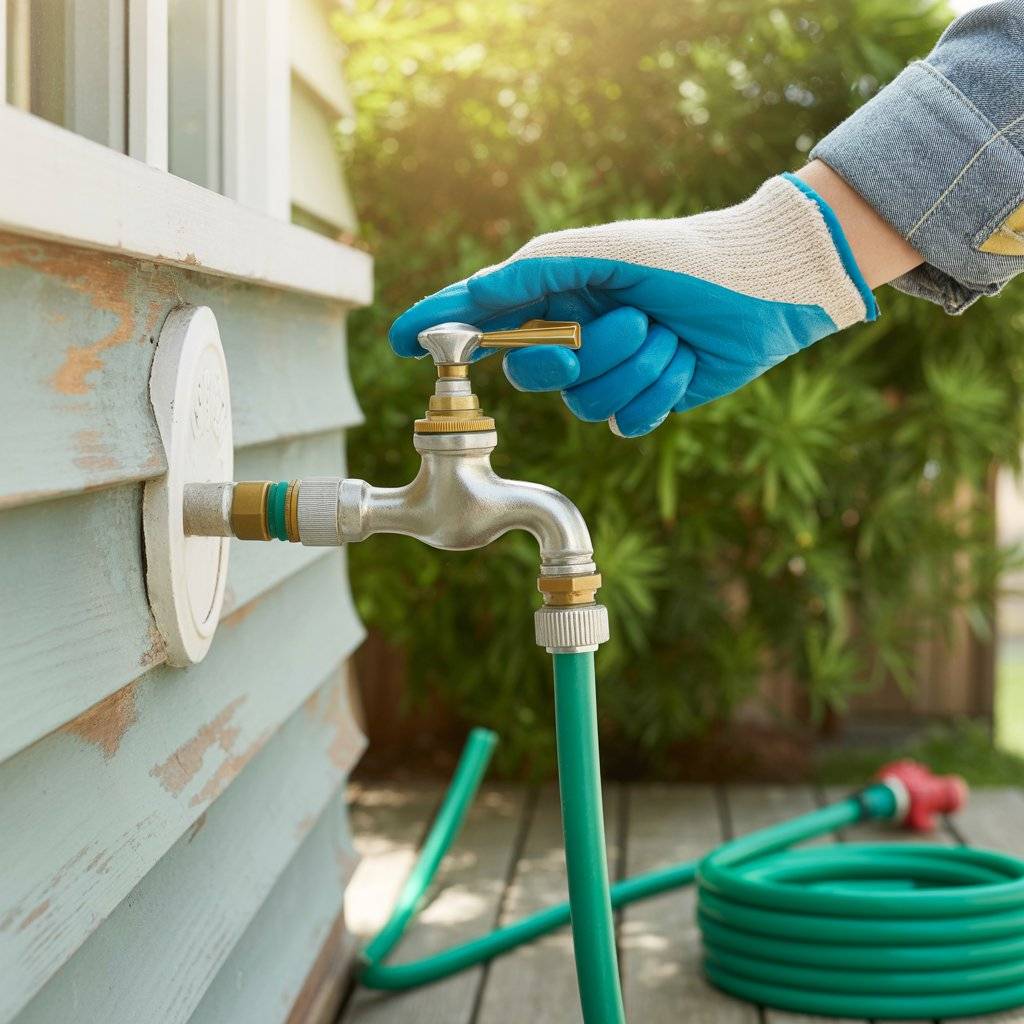
✅ 4. Test Smoke Detectors and Carbon Monoxide Alarms

You should be testing these monthly, but spring is a great moment for a reset especially if you’ve been burning wood or running the furnace all winter.
Go room to room and:
- Press the test button on each unit.
- Replace batteries if needed (most last 6–12 months).
- Wipe off dust that can muffle the sensor.
Also, check the expiration dates on the back of each device. Most smoke alarms need replacing after 10 years, carbon monoxide detectors after 5–7.
🛠️ Real tip: Use daylight saving time as your battery-changing reminder—”spring forward, check your alarms.”
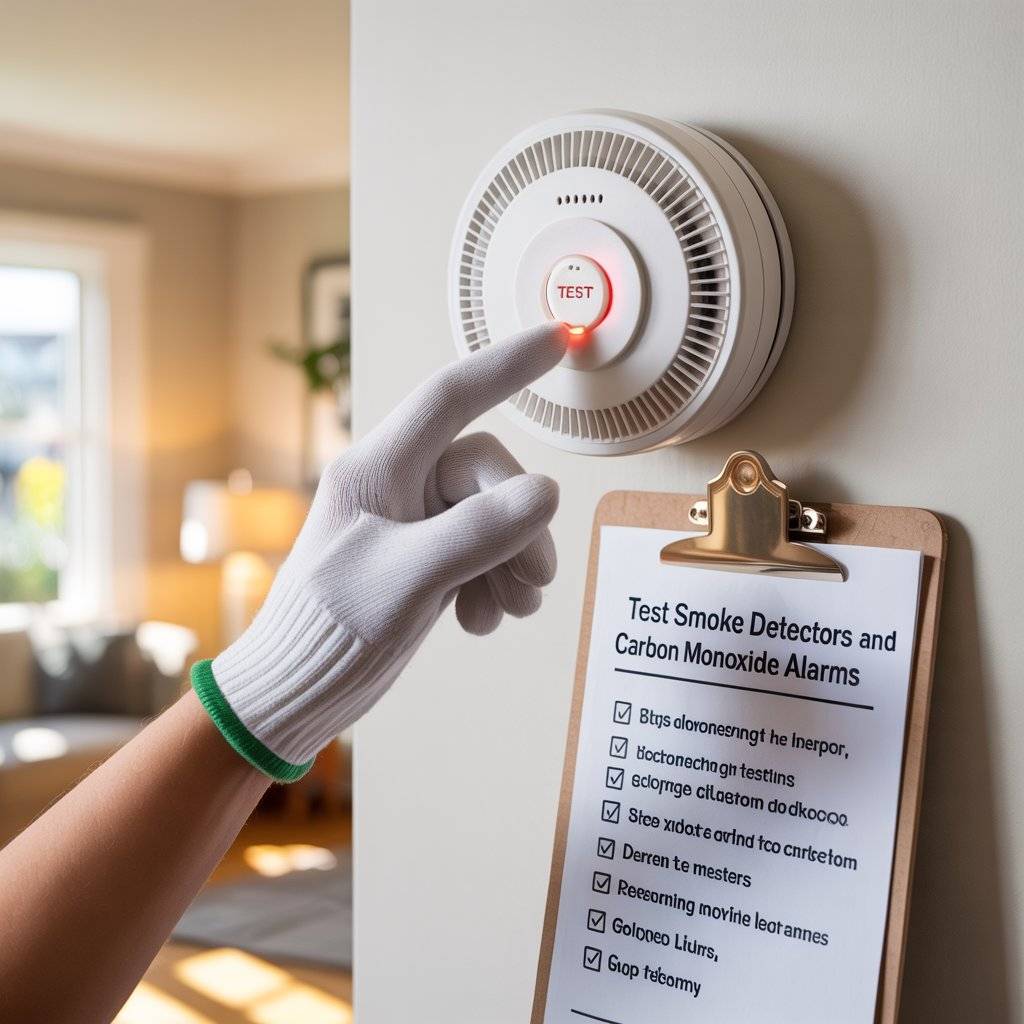
✅ 5. Examine Caulking and Weather-stripping Around Windows & Doors
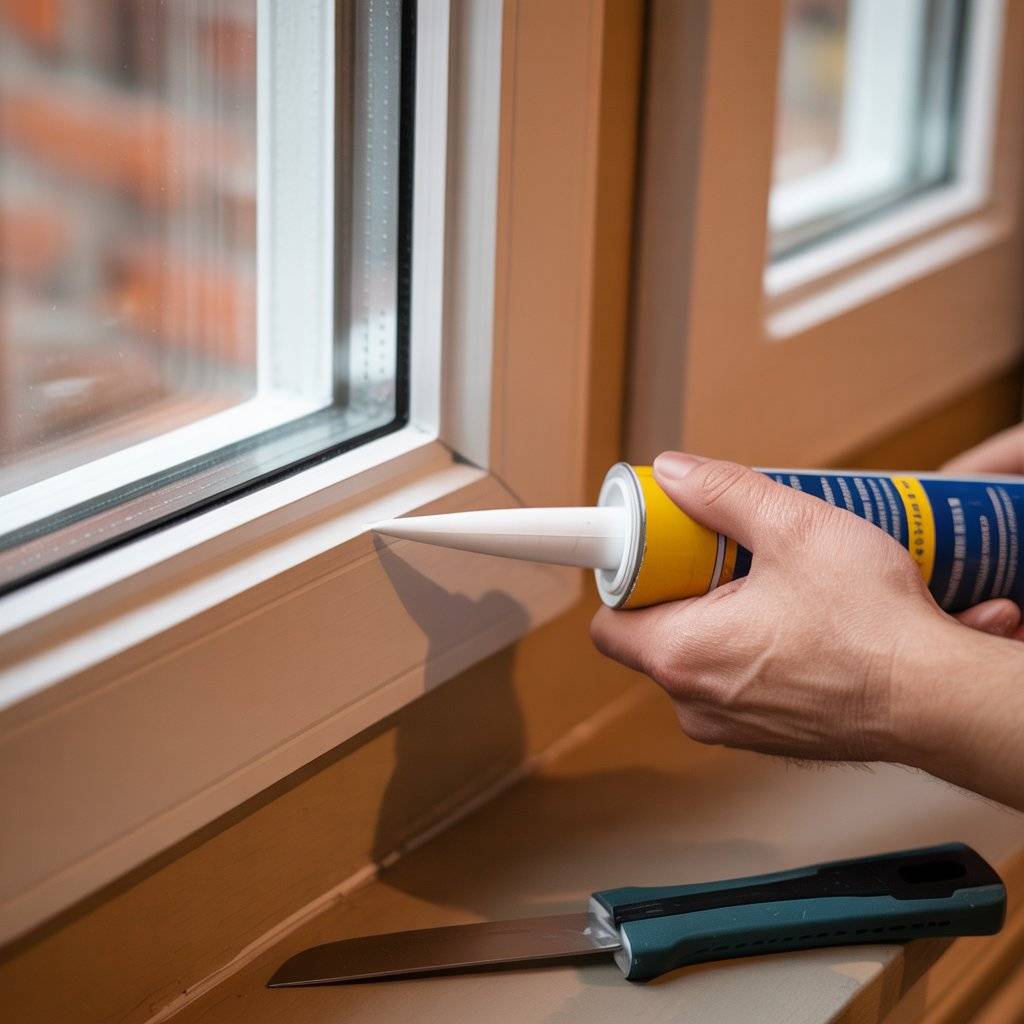
Spring is your window to stop energy loss before summer heat kicks in. Go around your house and inspect caulking and weather-stripping on all windows and exterior doors.
Signs it’s time to refresh:
- You see gaps, cracks, or peeling sealant.
- Light shines through closed doors.
- You feel drafts even when windows are closed.
Remove old caulking with a scraper or utility knife, and then apply a fresh bead using outdoor-grade silicone caulk. For doors, replace worn weather-stripping it’s inexpensive and saves on cooling bills.
🛠️ Real tip: A lit incense stick or candle can help you detect drafts. If the smoke pulls toward the window, air is leaking in.
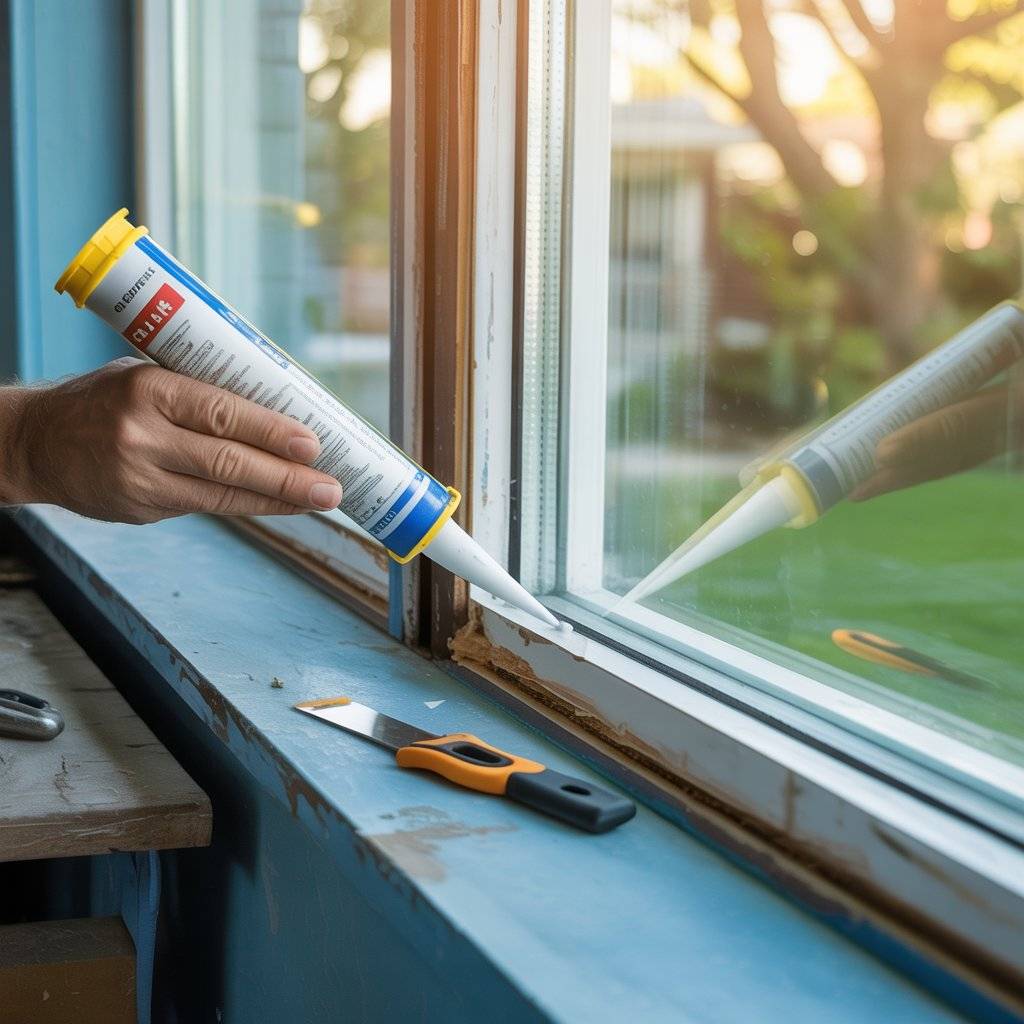
✅ 6. Power Wash Exterior Surfaces

Winter leaves behind dirt, mildew, and salt stains on your home’s siding, porch, driveway, and walkways. Power washing is a satisfying way to make everything look new again. Rent or borrow a pressure washer and start with a lower setting—too much pressure can damage paint or wood.
Focus on:
- Vinyl or brick siding
- Front steps and patios
- Decking, fences, and garage doors
- Outdoor furniture and grills
Don’t forget safety: wear protective goggles and shoes with grip. If you’re not comfortable using a pressure washer, a garden hose with a strong spray attachment and a stiff-bristled brush can still do a great job.
🛠️ Real tip: Add a bit of biodegradable detergent for better results on mold or algae. Always test a small spot first to avoid stripping paint.
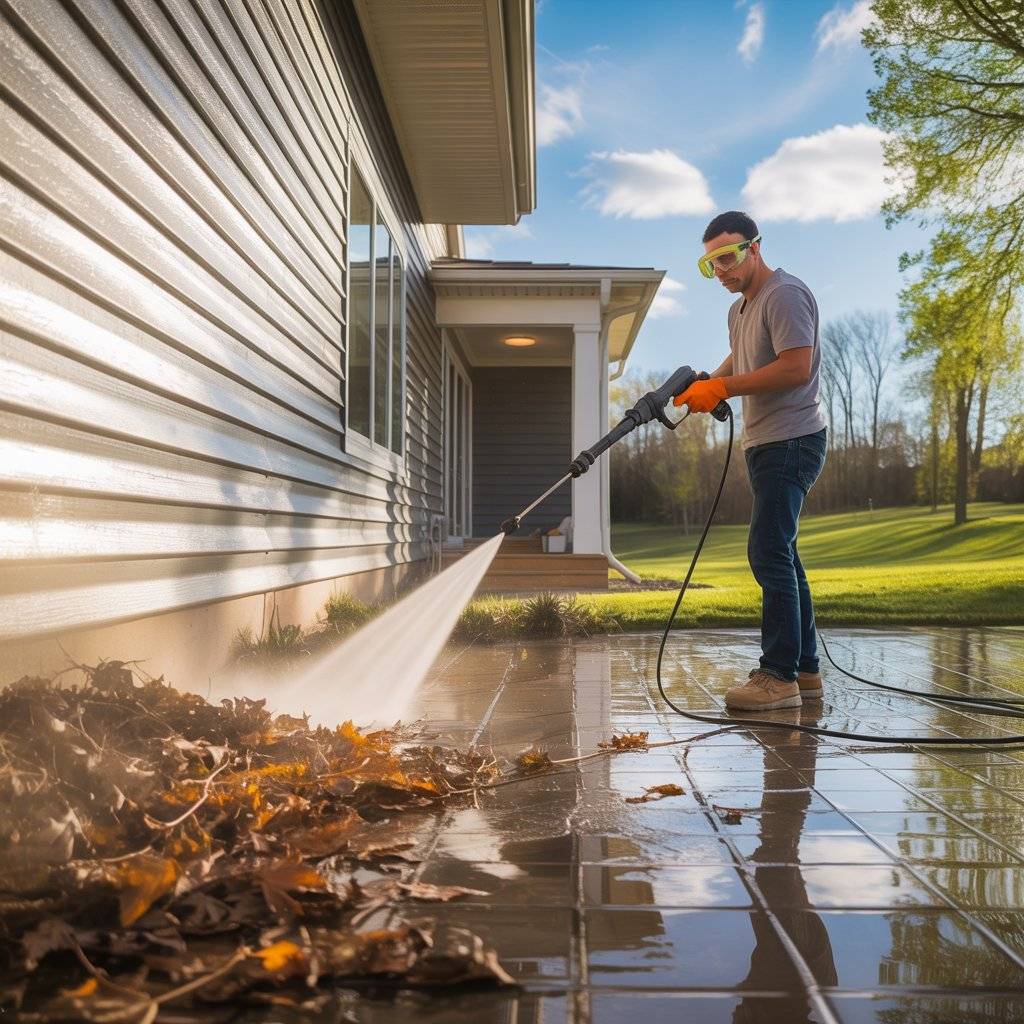
✅ 7. Clean Windows Inside and Out
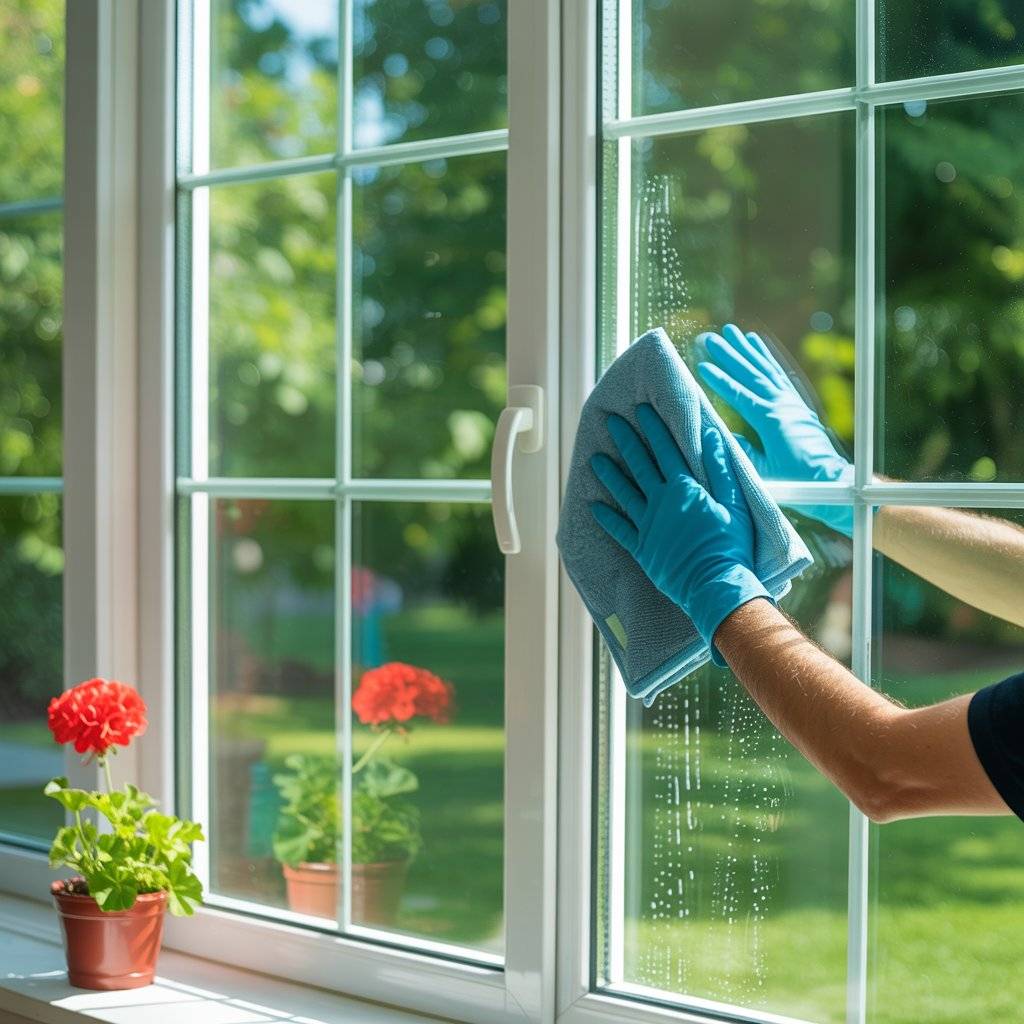
You’d be surprised how much light you’re missing when your windows are cloudy or dusty. Spring is the perfect time to clean them inside and out, especially after stormy winter months.
Use a bucket of warm water with dish soap or vinegar. Wipe windows with a microfiber cloth or newspaper for a streak-free finish. Don’t forget the window tracks use an old toothbrush to dislodge dirt and a vacuum to suck it all out.
If you have screens, remove them and rinse them with the hose. Let them dry fully before reinstalling.
🛠️ Real tip: Avoid washing windows on very sunny days—heat dries them too fast and leaves streaks. Pick a cloudy day for the best results.

✅ 8. Service Your Air Conditioning Unit
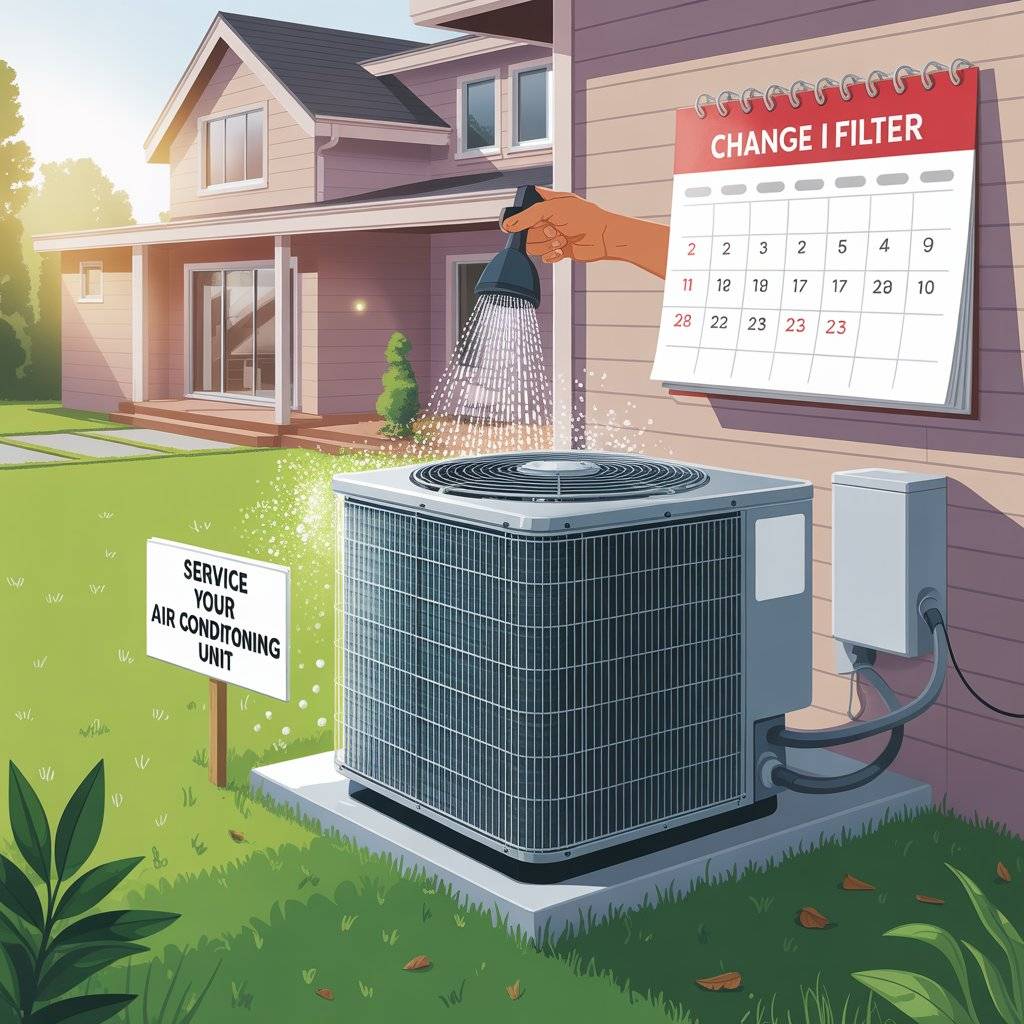
Before the summer heat arrives, your air conditioning system needs a tune-up. If you have central AC, call in a pro to check refrigerant levels, inspect the compressor, and ensure it’s running efficiently.
Here’s what you can do yourself:
- Change the interior air filter (should be done every 1–3 months)
- Clear leaves and debris around the outdoor unit
- Gently hose off dirt from the outside condenser coils
- Make sure the unit is level on its concrete pad
Keeping your AC in shape helps it run more efficiently, reduces wear, and saves money on your electric bill.
🛠️ Real tip: Mark your calendar for future filter changes or set a reminder on your phone.
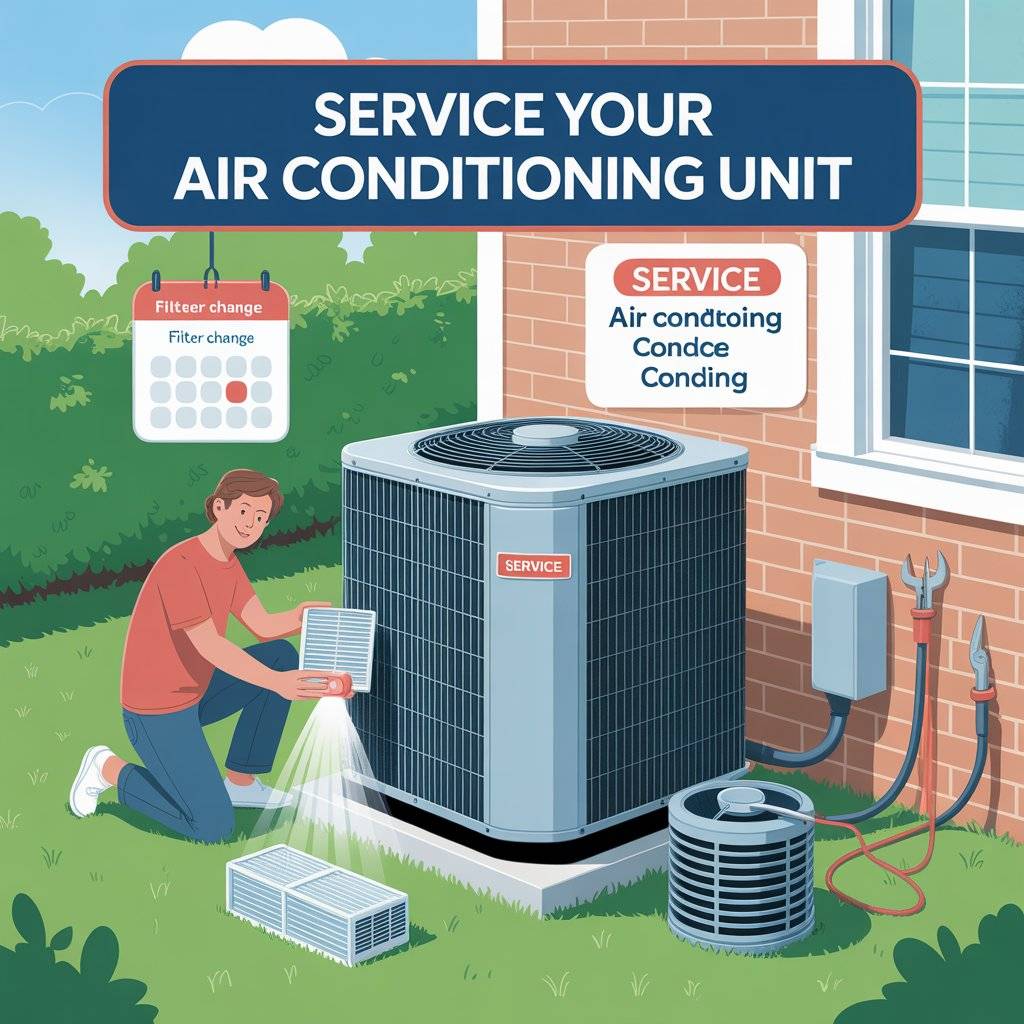
✅ 9. Check for Signs of Pests

As it warms up, ants, termites, rodents, and wasps become more active. A quick inspection can help you stop an infestation before it starts.
Look for:
- Tiny holes in wood (sign of termites)
- Droppings in basements or attics (rodents)
- Nests in eaves, garages, or under decks
- Chewed wires or insulation
Seal any gaps around pipes, doors, or windows with caulk or expanding foam. If you see signs of pests, contact a professional exterminator early—waiting only makes it worse.
🛠️ Real tip: Keep mulch at least 6 inches away from your home’s foundation. It’s a common hiding place for bugs.

✅ 10. Refresh Mulch and Trim Landscaping
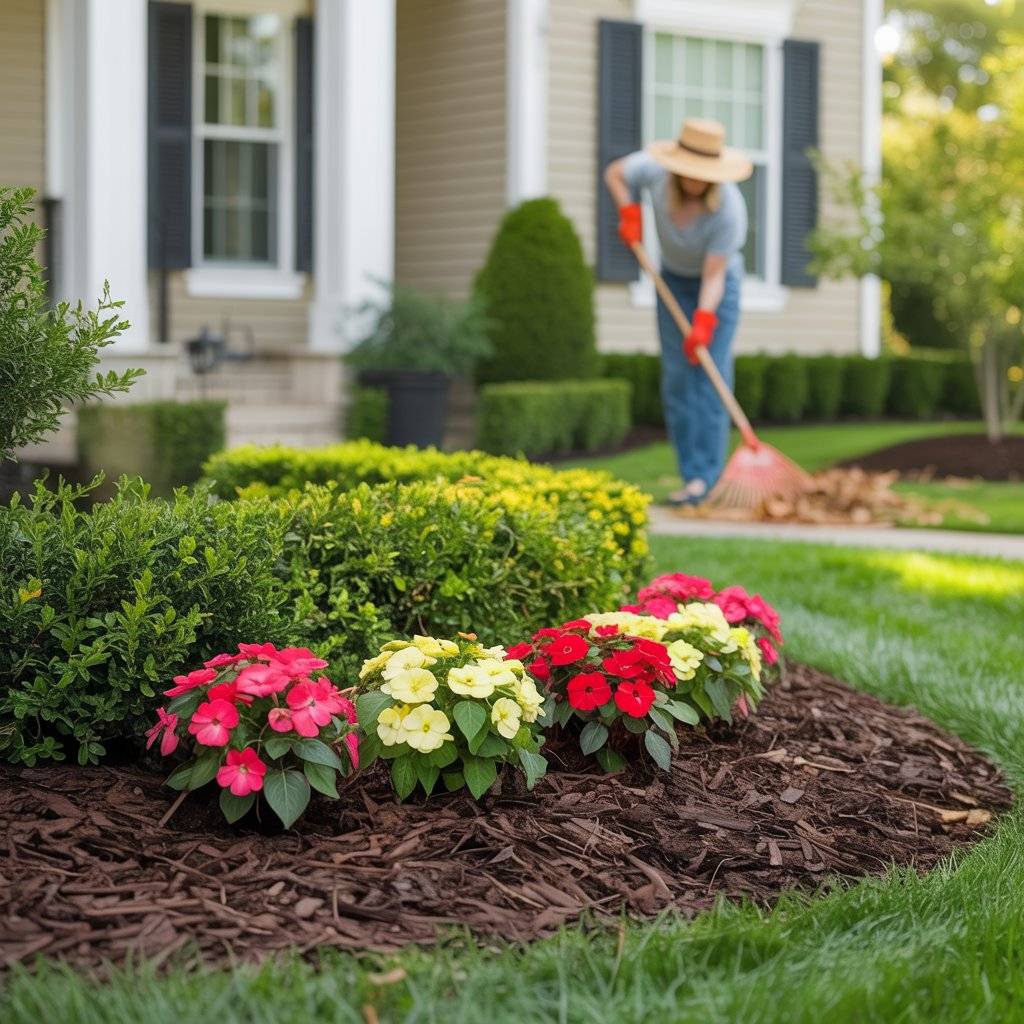
After months of snow or rain, your landscaping needs a pick-me-up. Rake dead leaves and twigs, pull out any weeds, and trim overgrown shrubs or bushes.
Then refresh your mulch beds—it helps keep moisture in the soil and suppresses weed growth. Just 2 to 3 inches is enough. Use natural, undyed mulch if you’re growing food nearby.
Also, check that plants and bushes are at least a foot away from your house siding to prevent moisture damage or pest access.
🛠️ Real tip: Use your lawn clippings as a mulch base under trees it saves money and reduces waste.
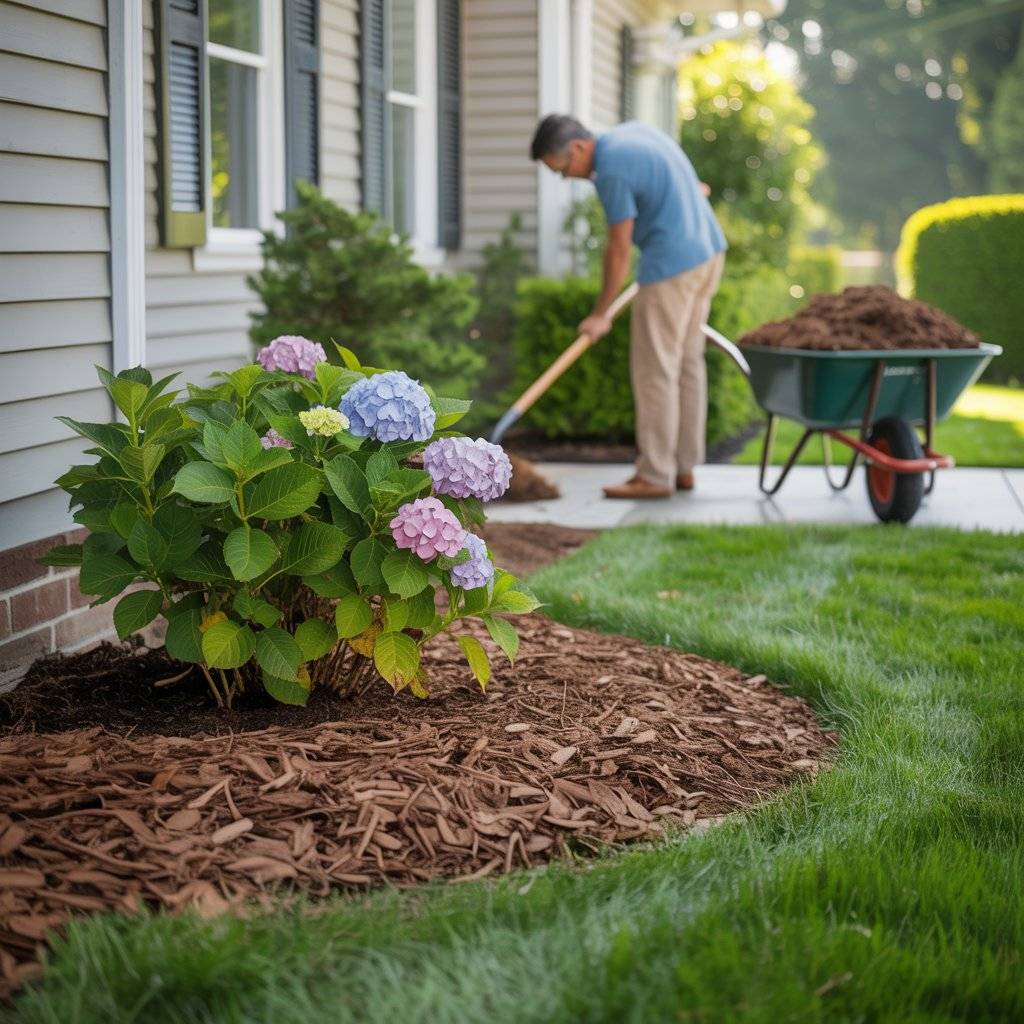
✅ 11. Inspect the Foundation and Basement for Moisture

Water in the wrong place can do serious damage. Walk around your home’s foundation and check for cracks, especially near basement windows or under gutters. Inside, look for damp walls, moldy smells, or signs of water seepage.
Seal small cracks with concrete patch or masonry caulk. For persistent moisture, you might need to add gutter extensions or regrade soil to slope away from your home.
🛠️ Real tip: Tape a square of plastic to your basement wall. If moisture collects behind it after a few days, you’ve got a humidity issue.

✅ 12. Inspect Driveways and Walkways
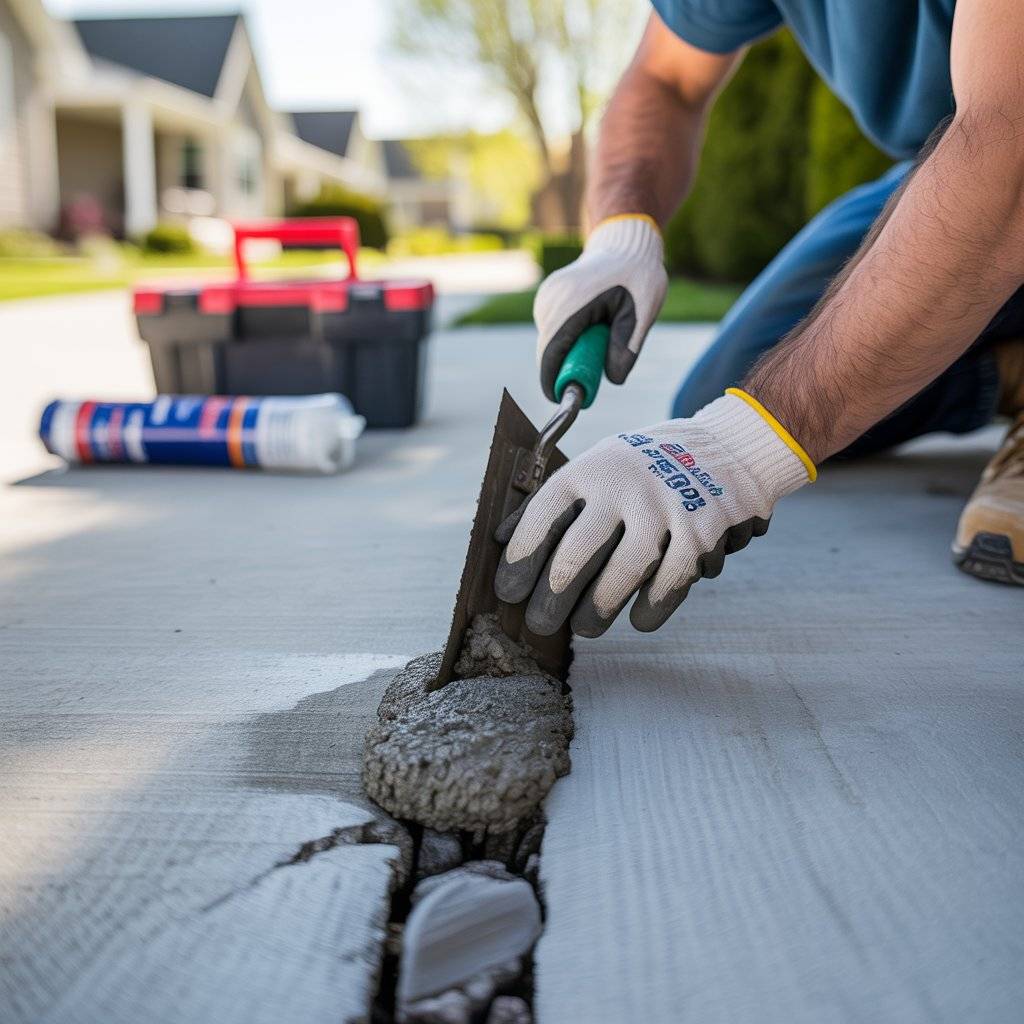
Cold weather can cause concrete and asphalt to crack. Inspect your driveway, front walk, and any paved areas for signs of damage or crumbling edges.
Fill small cracks with a concrete filler or asphalt patch kit (found at most hardware stores). Fixing minor damage now prevents bigger, more expensive repairs later.
If the surface is uneven or has drainage problems, consult a professional to avoid tripping hazards or water pooling near your home.
🛠️ Real tip: Sweep sand into the joints of brick or paver walkways each spring to keep them solid and weed-free.

✅ 13. Organize the Garage
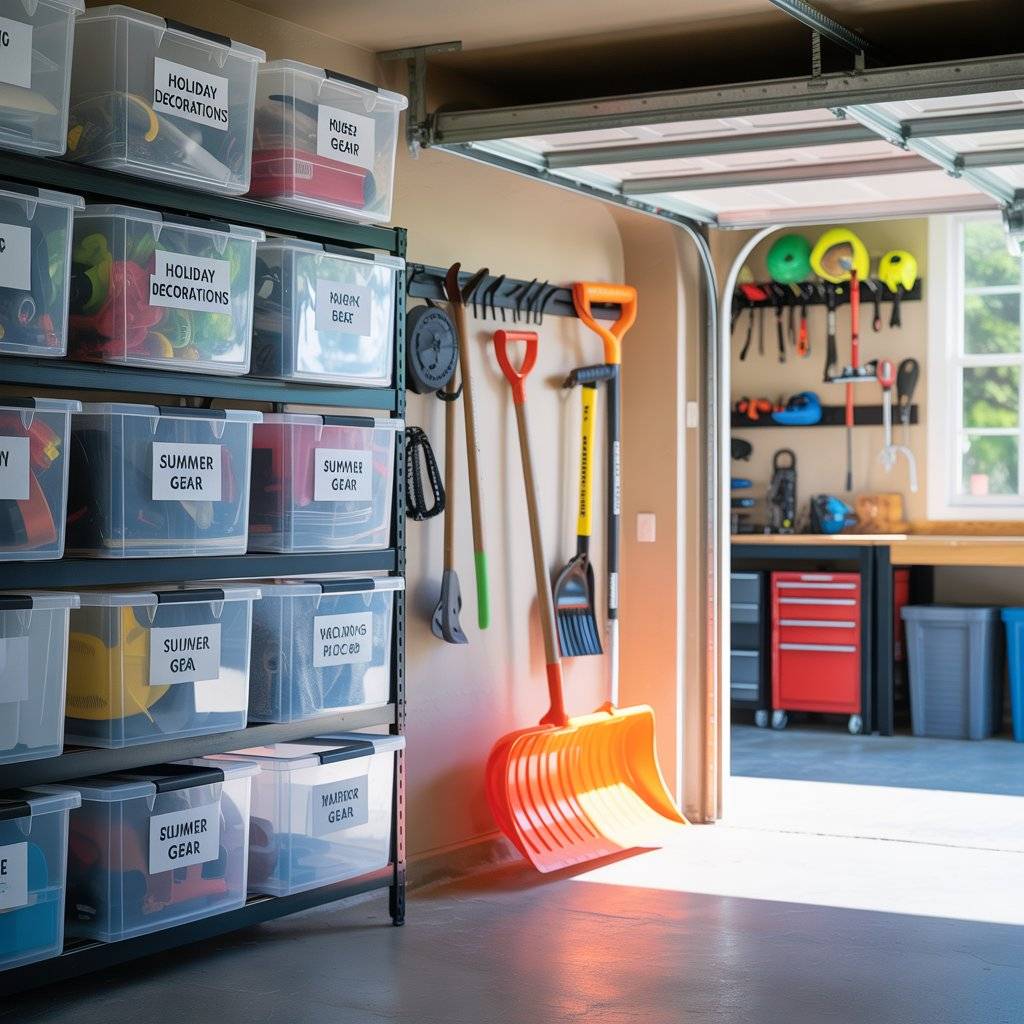

50 Garage Workshop Ideas to Spark Inspiration for DIY Enthusiasts
After months of tossing in snow shovels and holiday decorations, the garage can become a clutter trap. Spring is a great time to empty it out and get organized.
Sort everything into keep, donate, or toss piles. Install wall-mounted hooks or shelving to free up floor space. Check for leaks around garage doors and make sure your opener is working smoothly.
🛠️ Real tip: Use clear bins with labels so you can easily find seasonal gear no more digging through cardboard boxes.

✅ 14. Clean and Inspect Outdoor Furniture

Before your first BBQ of the season, make sure your outdoor setup is safe and inviting. Pull furniture out of storage and clean it with soapy water or a hose with a spray nozzle.
Check:
- Rust on metal frames
- Cracks in plastic or wood
- Loose bolts or wobbling legs
Add a coat of furniture-safe paint or sealant if needed. If cushions are musty or stained, wash them (if machine washable) or spot-clean with vinegar and water.
🛠️ Real tip: Store cushions in a deck box when not in use to extend their life and keep pests out.
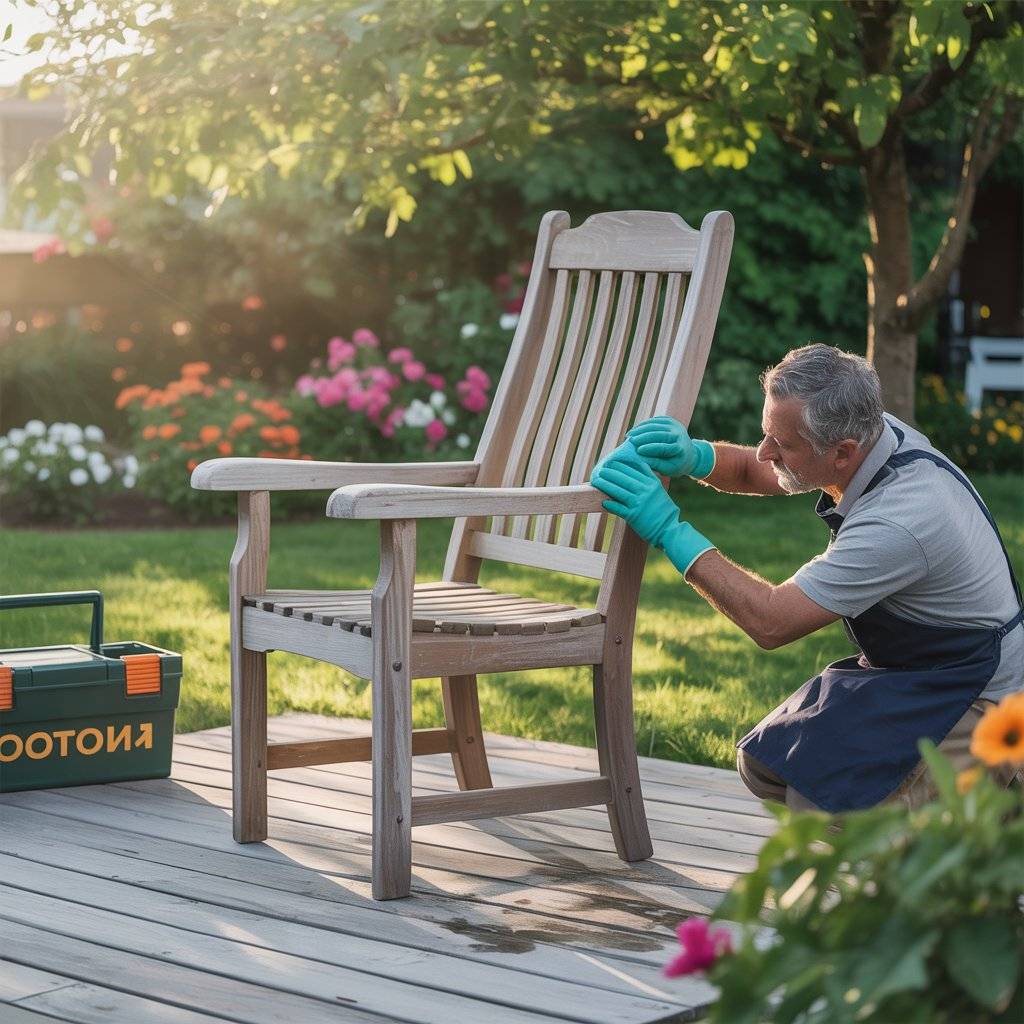
✅ 15. Test Outdoor Lighting

Well-lit outdoor spaces are safer and more inviting. Walk your property at dusk and check every exterior light—porch, pathway, garage, deck, and security lighting.
Replace burnt-out bulbs, clean the fixtures, and reposition motion sensors if they’re not detecting movement. Consider upgrading to energy-efficient LED bulbs or solar-powered options for walkways.
🛠️ Real tip: If outdoor outlets aren’t working, press the reset button on your home’s GFCI outlet (usually found in the garage or kitchen).

✅ 16. Check Fences and Gates

Winter winds and frost can loosen posts or cause wood to crack. Walk your fence line and test each section. Look for loose boards, rusted hinges, or broken latches on gates.
Fix minor problems now to avoid a bigger job later. Tighten screws, hammer in nails, or apply wood filler where needed. Consider staining or sealing wood fences every couple of years to extend their life.
🛠️ Real tip: Mark leaning posts with chalk so you don’t forget which ones to fix when you have time and tools ready.

✅ 17. Deep Clean Floors and Carpets

Mud, salt, and snow leave behind grime, especially in entryways. Start spring fresh by giving all floors a deep clean. Vacuum thoroughly, then mop with a suitable cleaner for hardwood, tile, or vinyl.
Rent or borrow a carpet cleaner to refresh rugs and carpets. Spot-treat any stains and let everything dry completely.
🛠️ Real tip: Move furniture and vacuum underneath—it’s surprising what collects there over winter.

✅ 18. Flip and Clean Mattresses

While you’re in deep-clean mode, show your mattress some love. Rotate it 180 degrees (or flip it, if it’s double-sided) to promote even wear.
Vacuum the surface and spot-clean any stains with baking soda and a damp cloth. Wash all bedding and consider swapping to lighter sheets for spring.
🛠️ Real tip: Sprinkle baking soda on the mattress, let it sit for an hour, and vacuum it up to neutralize odors naturally.

✅ 19. Service Lawn Tools and Equipment
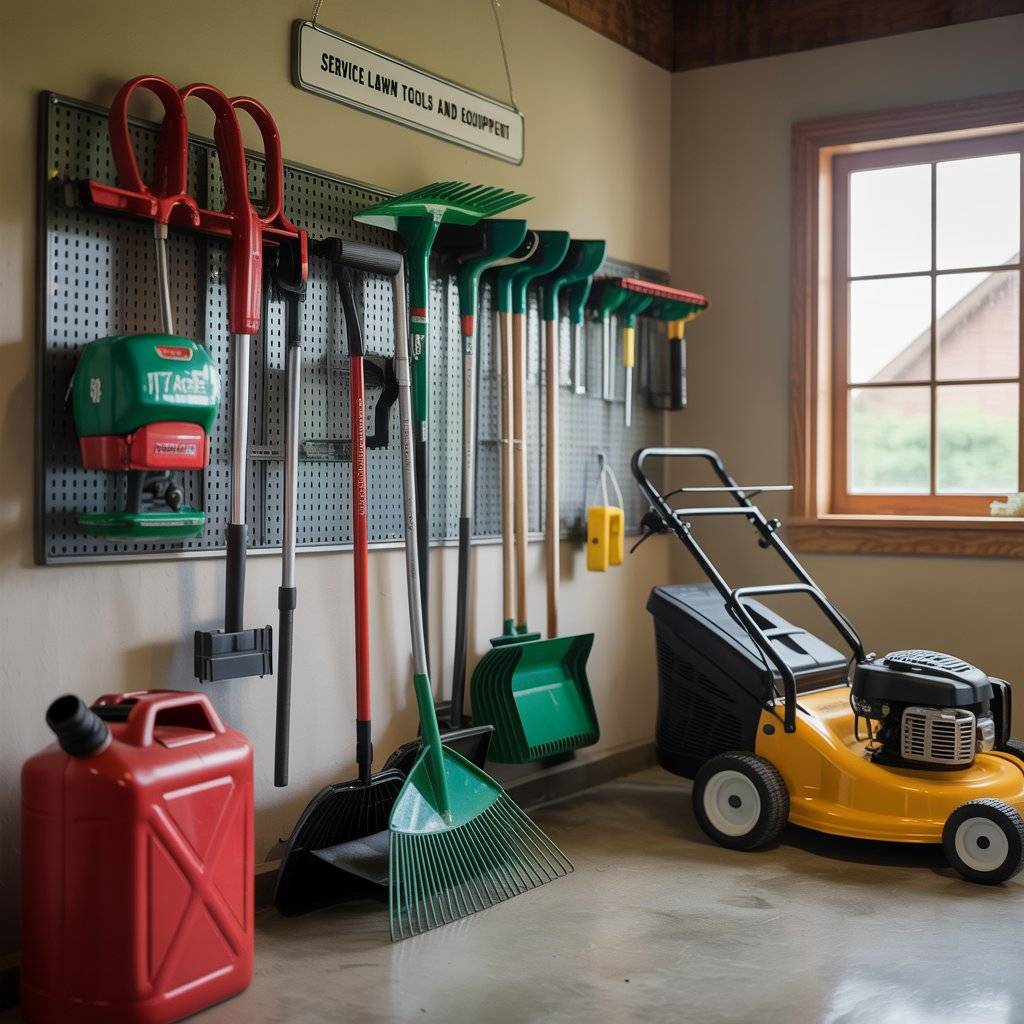
Get your mower, trimmer, and other garden tools ready before the grass starts growing fast. Sharpen mower blades, check oil and filters, and refill gas. If you use electric tools, check cords and batteries.
Clean tools with soapy water and disinfect with vinegar or rubbing alcohol this helps prevent the spread of plant diseases.
🛠️ Real tip: Hang tools on a pegboard or wall hooks to keep them rust-free and easy to grab.
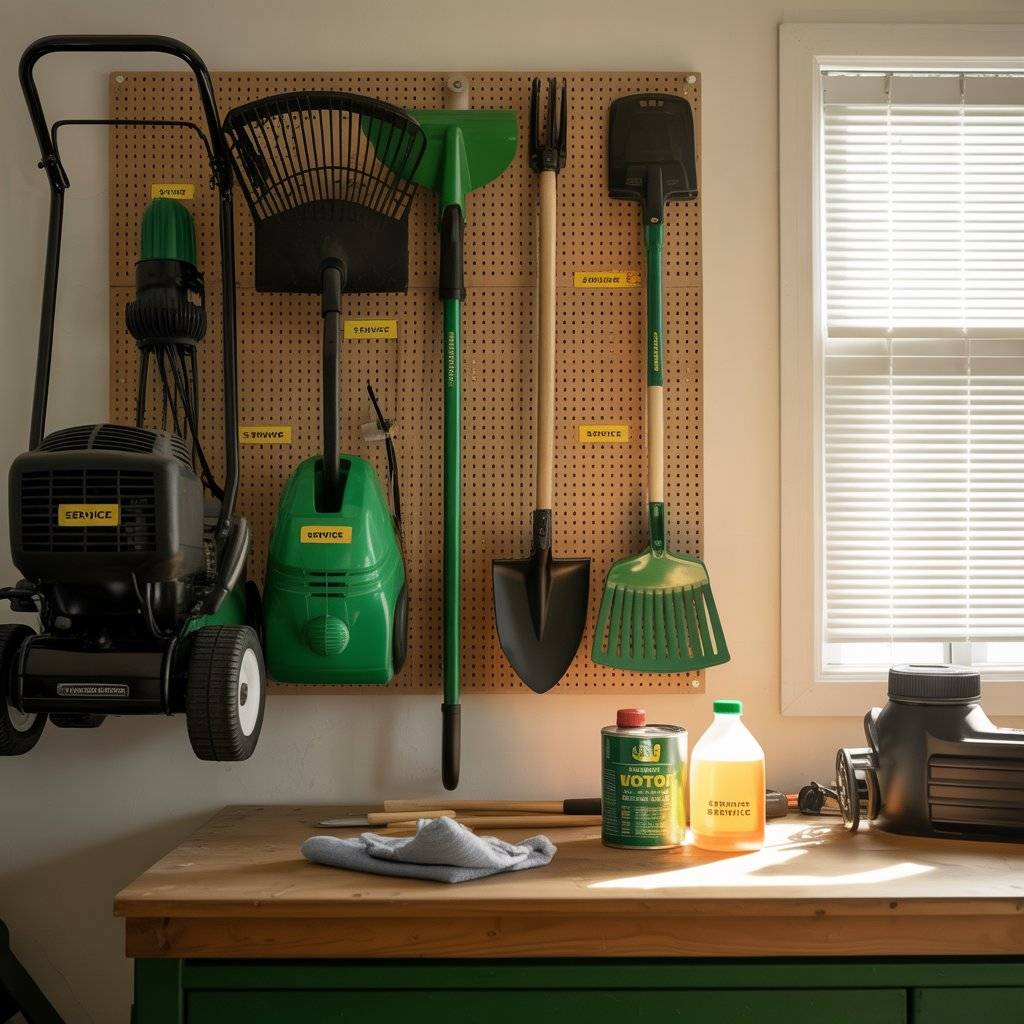
✅ 20. Review Your Home Maintenance Calendar
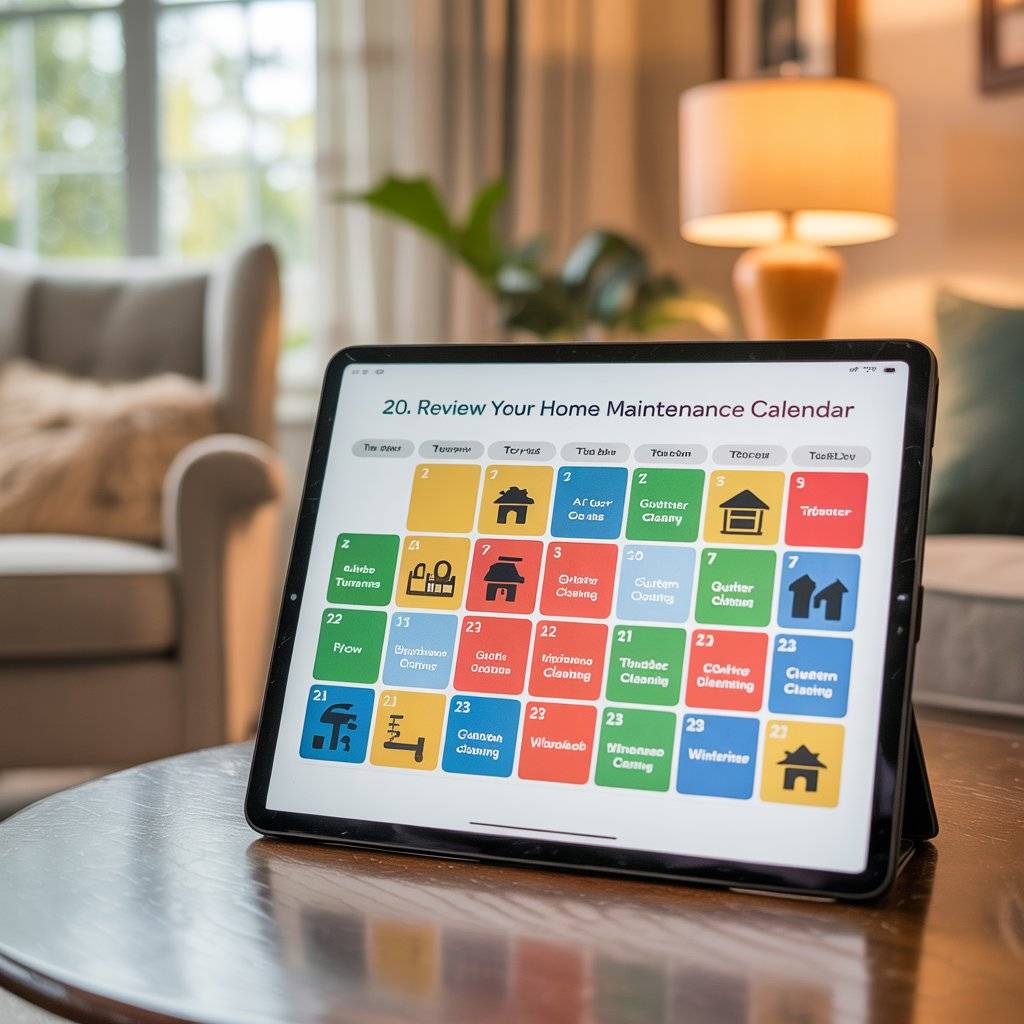
Now that you’ve tackled spring maintenance, look ahead. Set reminders for future tasks: summer AC tune-ups, fall gutter cleaning, and winterizing chores. A calendar or home maintenance app can help you stay organized year-round.

FAQ: Spring Home Maintenance

1. What should be the first thing I check in spring home maintenance?
Start with your roof and gutters. Winter storms can cause hidden damage, and your roof is your home’s first line of defense against spring rains. Gutters are next they protect your foundation from water overflow. Fixing these early can prevent major water damage later in the season.
2. How much does spring home maintenance usually cost?
It depends on what needs attention. DIY tasks like cleaning windows, testing alarms, and changing filters are inexpensive. But professional inspections (roofing, HVAC, pest control) might range from $100 to $300 each. Think of it as an investment early fixes now are much cheaper than major repairs later.
3. Do I need to hire professionals for everything on the checklist?
Not at all. Most tasks like clearing gutters, power washing, or replacing caulk can be done by homeowners with basic tools. But if you’re unsure about roofing, plumbing, or HVAC work, it’s smart (and safer) to call a pro. It’s okay to mix DIY with expert help.
4. How long will it take to finish this spring maintenance checklist?
If you spread it out over 3–4 weekends, it’s very doable. Some tasks take an hour, others just 10 minutes. You can even divide it up: focus on exterior tasks one weekend, then interior tasks the next. The key is progress not perfection in one day.
5. Why is spring the best time to do home maintenance?
Because it’s a transition season. You’re recovering from winter’s harsh conditions and preparing for the heat of summer. Catching problems now like leaks, cracks, or broken seals means you avoid higher cooling bills or structural issues when the weather gets extreme.
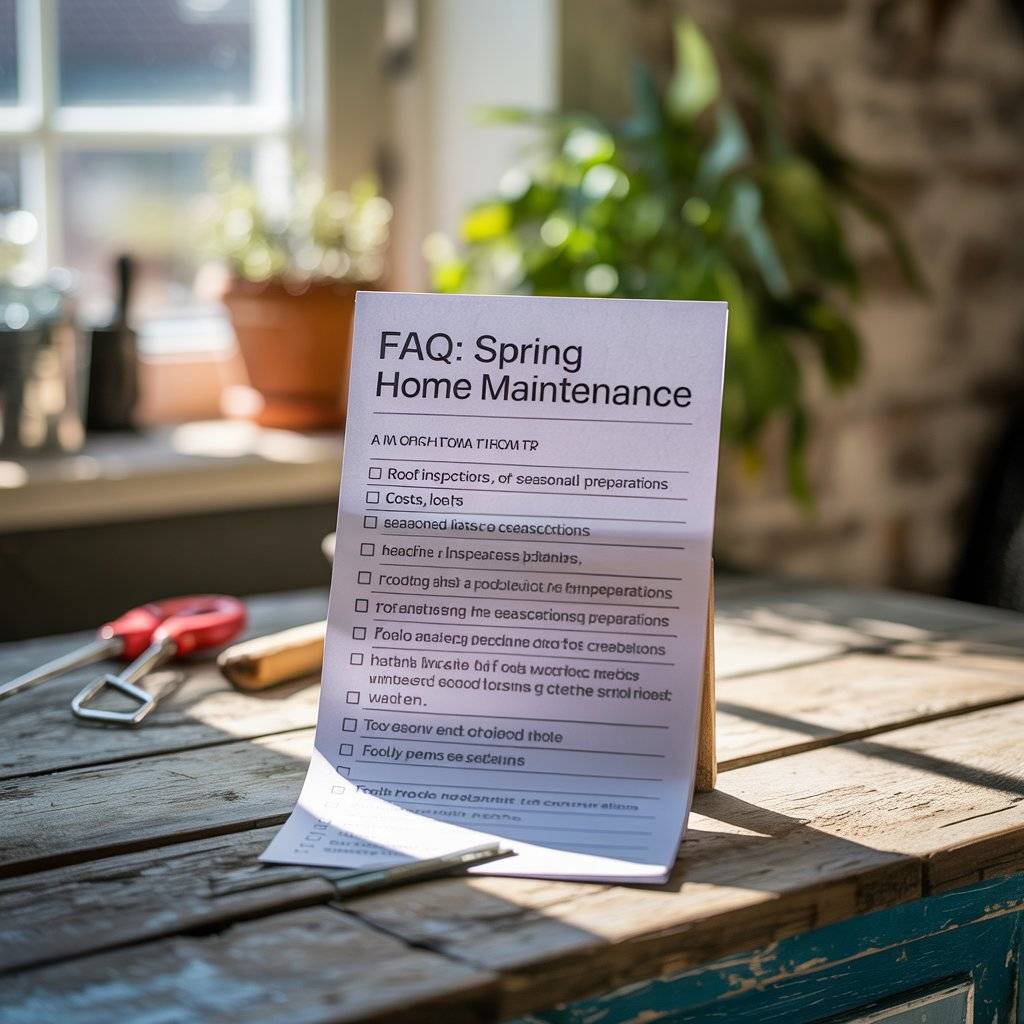
🔧 Six Reasons Why I Wrote This Article
- To Help Homeowners Feel in Control
- Home maintenance shouldn’t feel overwhelming. I wanted to create a checklist that’s practical, manageable, and clear something anyone can follow without needing a contractor’s license.
- Because Spring Is the Perfect Fresh Start
After months of cold and chaos, spring gives us a natural reason to reset. I wrote this to help people make the most of the season—not just with cleaning, but by strengthening and protecting their homes.
- To Save You Money in the Long Run
Many homeowners don’t realize how small fixes like cleaning gutters or checking caulking can prevent thousands in damage. This article is here to help you stay ahead, not behind.
- To Bring Peace of Mind
When your home is in good shape, it’s one less thing to stress about. I wrote this to offer simple ways to gain that peace through action, not guesswork.
- To Encourage Real-World Progress
This isn’t a fluffy “Pinterest” list. It’s grounded, tried-and-true advice based on real home care designed for people who are ready to roll up their sleeves and make a difference.
- To Share What I Wish I Knew Earlier
Like many people, I learned some of these lessons the hard (and expensive) way. This article is my way of helping you skip that pain and feel confident in caring for your space.
💬 Final Thoughts: Your Home Deserves the Care
Spring is more than a season it’s an opportunity. Your home, like any relationship, thrives when it’s nurtured. Whether you tackle all 20 items or just a few this weekends, every step you take adds comfort, safety, and value.
If this guide helped you, save it, share it, or bookmark it and keep the momentum going. There’s always more to learn, and I’ve got more in store.
👉 Explore more home guides, DIY tips, and real-life checklists right here on the blog. Your home journey doesn’t stop with spring and neither do we.
Thanks for reading and happy maintaining!
- Natural Wood Tables: Rustic & Eco-Friendly Furniture - December 8, 2025
- Enchanting Christmas Garden Designs for a Cozy, Festive Backyard - November 29, 2025
- 35 Best Open Layout Living Room Dining Room Designs - November 29, 2025

